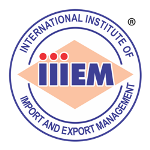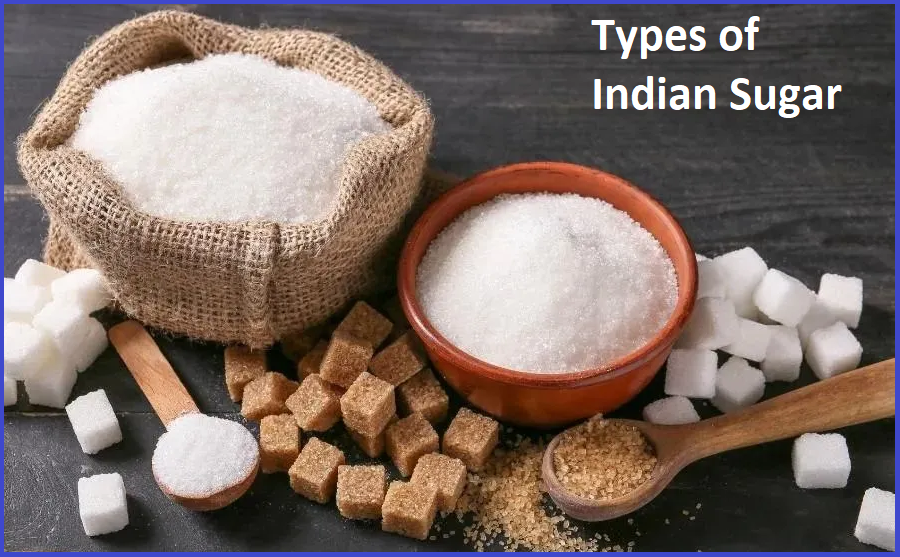Exporting Sugar From India
Introduction
As the world’s second-largest sugar producer after Brazil, India has a large supply base. However, domestic consumption is also high, meaning export volumes are determined by the surplus after meeting internal demand.
India exports sugar to a diverse range of countries across Asia, Africa, and the Middle East, with destinations varying based on quotas and demand. The specific destinations and export volumes can fluctuate from year to year due to government policies and market conditions.
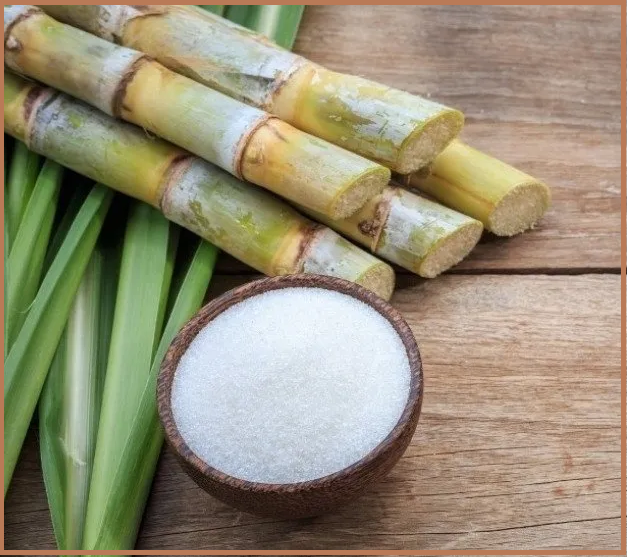
HS Code for Sugar
The general HS code for white crystal sugar is
1701.99.90. This code falls under Chapter 17, which covers “Sugars and Sugar Confectionery”.
Here is a breakdown of the classification:
- Chapter 17: Sugars and sugar confectionery.
- Heading 1701: Cane or beet sugar and chemically pure sucrose, in solid form.
- Subheading 1701.99: Other, not containing added flavoring or coloring matter.
- HS Code 1701.99.90: This is the most common code used for exporting white crystal sugar from India.
Types of Sugar being exported from India
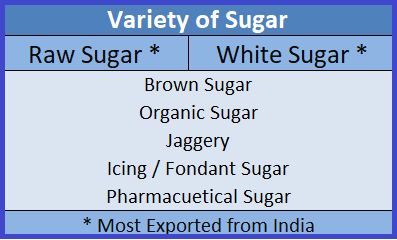
Countries where Sugar is exported from India:
Exporting sugar from India is a regulated process that requires adherence to government policies and the successful acquisition of licenses and permits. This is because sugar is considered an essential commodity, and the government controls its export to ensure domestic availability and price stability.
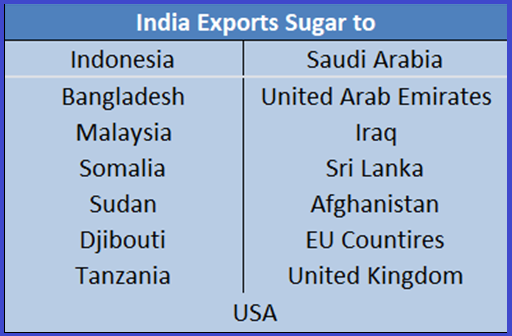
Quality Parameters for Sugar
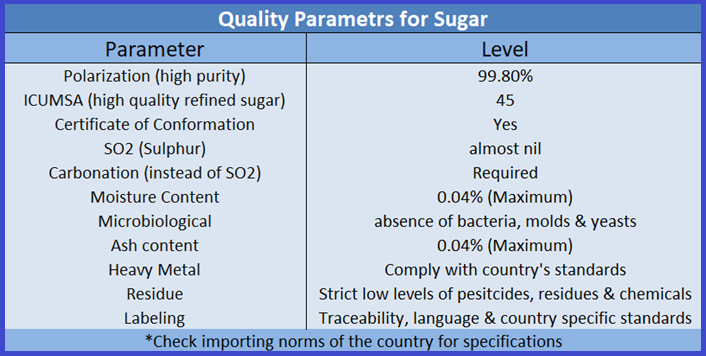
How to Export Sugar
Secure initial business and government registrations
- Obtain an Importer-Exporter Code (IEC):
- Register with APEDA
- Complete GST registration
- Register with FSSAI
- Get an Export Release Order (ERO)
- Phyto-Sanitary Certificate
- Health Inspector for Sugar before Customs Inspection
- Licensed Sugar Mills for Merchant Exporter to Source the sugar
- Lab test for the quality of Sugar
- Importing country specific certificates and Registrations (Ask the Buyer)
- Narcotics certificate
ERO:
- The government places restrictions on sugar exports. Secure an ERO from the Directorate of Sugar, Department of Food and Public Distribution (DFPD), via the National Single Window System (NSWS) portal.
- You will need to submit your buyer’s details, stock information, and quantity in your application.
Post-export compliance
- Monthly reporting: All sugar mills and exporters are required to submit monthly export details (including quantity, value, and destination) on the DFPD’s NSWS portal.
- Documentation: Maintain meticulous records of all export transactions, licenses, certificates, and reports for audits and compliance checks.
Important considerations
- Government-imposed quotas: Sugar export quotas are allocated periodically by the DFPD. Applications are often processed on a pro-rata basis, and the ERO is only for a specific, allocated quantity. This happens in January of a year.
- DFPD website and notifications: The DFPD website (dfpd.gov.in) publishes all official notifications and guidelines regarding sugar exports, including ERO procedures.
- First-come, first-served basis: While the allocation process may involve quotas, applications are often processed on a first-come, first-served basis within a given window, so applying promptly is advisable.
- Strict compliance: The DFPD closely monitors compliance with ERO regulations. Any violations can lead to severe penalties under the Essential Commodities Act, 1955.
- https://dfpd.gov.in/WriteReadData/Notices/bc6394e6-77ec-4e79-b4a3-a29422dba1e5_Allocation%20of%20export%20quota%20of%2010%20LMT.pdf – read and refer
Thank you
